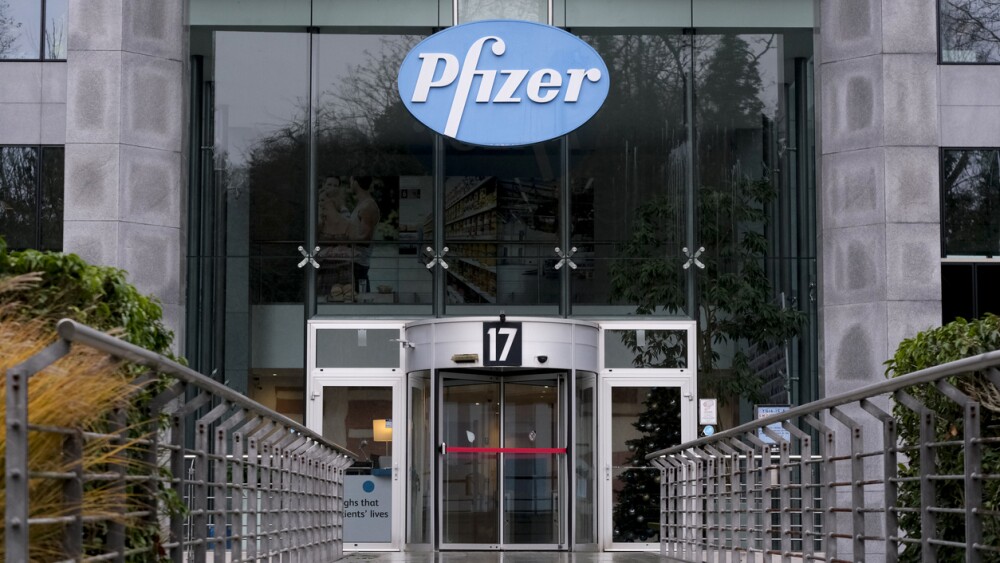Following a series of clinical failures, optimism builds for the first disease-modifying treatment.
It’s 100 percent fatal, hits patients in the prime of their lives, then gets passed down to 50 percent of the next generation. Thirty years after the discovery of the huntingtin gene, the biopharma industry is still searching for an effective treatment for Huntington’s disease.
Within the past few years, Roche and Wave Life Sciences have experienced high-profile failures in the space, and in late 2022, Triplet Therapeutics, a young startup with an approach targeting Huntington’s and other genetic diseases, closed its doors, and precision genetics medicine biotech NeuBase Therapeutics halted development of its Huntington’s program.
Symptomatic treatments exist for Huntington’s disease, which is caused by a CAG repeat in the first exon of the huntingtin (HTT) gene, but to date, no disease-modifying drug has made it across the finish line.
Rudolph “Rudy” Tanzi was part of the team that identified the Huntington’s gene chromosome in 1983. At the dawn of the genomic revolution, it was the first gene to be mapped to a human chromosome without any prior indication of the gene’s location. “You had no idea what chromosome it was on, you had no idea what the protein defect was,” Tanzi, now a professor of neurology at Harvard Medical School and Massachusetts General Hospital, told BioSpace. The search, which Tanzi compared to looking for “12 pieces of hay in 23 haystacks,” took two years.
Instrumental to the discovery was a large group of patients in Venezuela. Huntington’s disease was evident in more than 12 families in this country, each with 10 or 11 children, Tanzi said. “Once we had [those families], we tested that same DNA marker from chromosome 4, and that sealed it . . . . It was clear we’d found the gene.”
Ten years later, the pathogenic mutation in the huntingtin gene was identified as a CAG-repeat expansion. This mutation causes brain cells to die, leading to a host of progressive cognitive, psychiatric and movement disorders.
“There’s been a lot of progress on mechanism,” said Michael Hayden, CEO and founder of Prilenia Therapeutics, who was also involved in early linkage studies. Prilenia is developing treatments for Huntington’s and other neurodegenerative diseases. “But . . . from the time you define mechanism to the time you have a drug can take twenty years.”
Thirty years on, the search for a disease-modifying drug for Huntington’s continues.
A Multifaceted Disease: Toxic Gain and Toxic Loss
After discovering the genetic driver for Huntington’s, researchers delved into the roles of the healthy and mutant HTT proteins—biology that Paul Bolno, president and CEO of Wave Life Sciences, said has been interesting. “We really realized that Huntington’s disease, in a lot of ways, is both a toxic gain of function and a toxic loss of function.”
One challenge, Hayden told BioSpace, is that gene-silencing therapies, such as Roche’s tominersen, also knocked down the wildtype HTT (wtHTT) protein, which may be neuroprotective.
The pan-silencing hypothesis holds that there is a therapeutic window in which it is possible to reduce mutant HTT (mHTT) protein and concomitantly not reduce the wildtype HTT protein and keep that balance, explained Anne-Marie Li-Kwai-Cheung, Wave’s chief development officer, who previously led the tominersen efforts at Roche.
“In a pan-silencing approach, you are succeeding, hopefully, in taking down the toxic protein,” she told BioSpace. “But the other half of the disease, which is a toxic loss of function, is that the wildtype [HTT] that you inevitably take out at the same time is actually really essential.”
The question, Hayden posed, is would it not be better to have an allele-specific knockdown? This is the approach being taken by Wave. The company’s next-generation antisense oligonucleotide (ASO) WVE-003 is designed to preferentially lower mHTT protein levels by targeting a single nucleotide polymorphism that appears on the mHTT transcript.
“It is possible there’s a therapeutic window, but if you can approach the problem more elegantly by being selective, that is by far the better approach in my opinion,” Li-Kwai-Cheung said.
Delivery can also be a challenge, Hayden said. Intrathecal treatments, which are administered into the spinal canal, can also fail because “you may not get target engagement or sufficient target engagement because you have to get from the CSF all the way deep into the center of the brain,” Hayden said.
This was the case with Wave’s first-generation ASOs, according to the company’s then chief medical officer, Michael Panzara.
Bolno believes Wave has solved this issue with WVE-003 in the form of a chemical modification to its platform. “The PN chemistry we’ve been using . . . has really transformed what we’ve seen not just in terms of exposure [and] target engagement but durability,” he said.
In September 2022, Wave presented data from the Phase Ib/IIa SELECT-HD trial showing a mean decrease in mHTT from baseline of 22% at 85 days. The mean reduction relative to placebo was 35% at 85 days after a single 30 mg or 60 mg. The company expects to share data from the 30 mg multi-dose cohort this quarter.
Optimism for an Approval
Prilenia is taking still another approach with pridopidine, a pill containing what the company describes as a “highly selective and potent” agonist of the sigma-1 receptor (S1R) protein, which is highly expressed in the brain and spinal cord and regulates several key processes that are commonly impaired in various neurodegenerative diseases.
Last month at the 75th American Academy of Neurology (AAN) Annual Meeting, Prilenia shared that pridopidine missed the primary endpoint, change from baseline compared to placebo at 65 weeks as measured by the Unified Huntington Disease Rating Scale-Total Functional Capacity score, in the Phase III PROOF-HD study. The drug also failed the key secondary endpoint, measured by the Composite Unified Huntington’s Disease Rating Scale.
Still, Hayden is optimistic as effects on both of these measures were reduced by the use of concomitant medications, according to the company’s press release. A prespecified analysis that excluded participants taking neuroleptics and chorea medications showed “clinically meaningful and nominally significant benefits” with pridopidine.
“When we looked then at those off of anti-dopaminergics [which includes neuroleptics], then we got a very different picture,” Hayden said. In terms of total functional capacity, these patients remained stable for at least a year, and in terms of motor function and cognition, “we saw improvement,” he said. “That was exciting because no [Huntington’s] drug had ever shown improvement in any of these functions.”
Hayden additionally noted that the pridopidine is “completely safe. There were no serious adverse events, and it’s . . . easy to take. When you look at risk-benefit, there is no risk and essentially patients—not everybody, but many patients—derive benefit.”
On the strength of these data, European regulators have encouraged Prilenia to submit a Marketing Authorization Application for approval, Hayden said, which the company plans to do by the end of July.
“It’s taken a long time,” Hayden said, “but the good news now is that Huntington’s disease has attracted the attention of pharma and biotech, big and small . . . and it’s recognized, sadly, that this is a disease that has been described as the worst disease known.”
Li-Kwai-Cheung predicted there would be a disease-modifying therapy for Huntington’s within 5 to 10 years. “Sometimes people get this feeling of like, it’s just futile and we’re not going to get there. But I don’t think that’s true,” she said. “I think all of these experiments have served a purpose to move the field forwards, and we really are on like the cusp as a field of getting a therapeutic to the market in [Huntington’s disease].”
And once that happens, “We’ve seen in lots of different neurological spaces that that first approval really acts as an incredible catalyst and more drugs come after that as well.”
Heather McKenzie is a senior editor at BioSpace. You can reach her at heather.mckenzie@biospace.com. Also follow her on LinkedIn.






